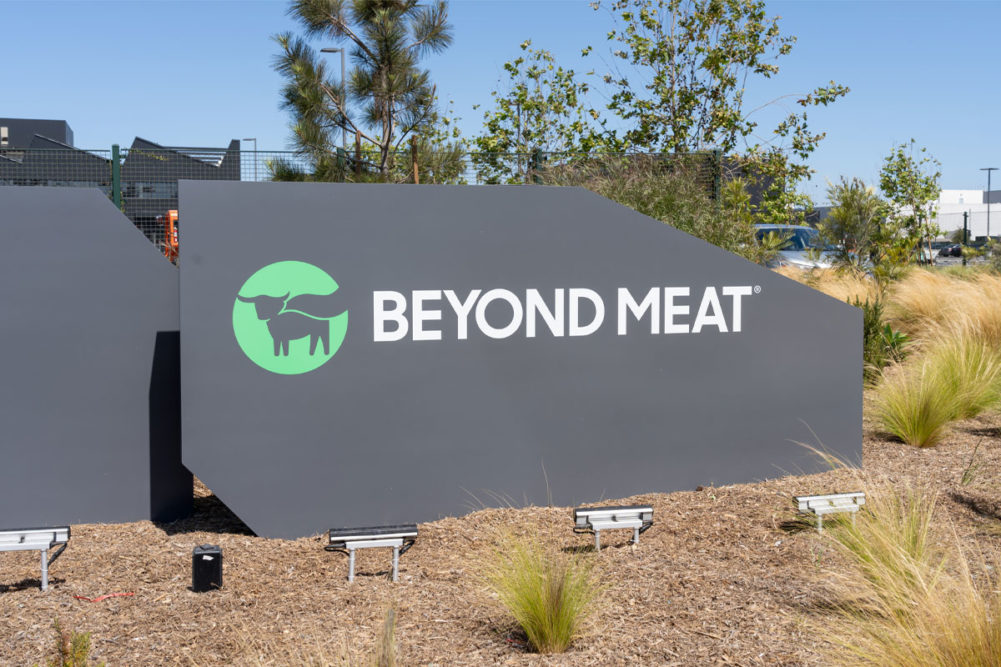EL SEGUNDO, CALIF. — Beyond Meat Inc. recorded a loss of $366 million during fiscal year 2022, ended Dec. 31, 2022, more than double the loss of $182 million the company endured the year prior. Making matters worse, sales in 2022 were $419 million, down 10% compared to the year prior.
Ongoing weak consumer demand for more expensive meat alternatives and rising costs throughout the year severely pressured results.
In November 2022, when the company announced poor third-quarter results, management said it was pivoting the business from a growth above all operating model to one that prioritizes positive cash flow and sustainable growth. The full pivot was apparent as Ethan Brown, president and chief executive officer, discussed fourth-quarter results and Beyond Meat’s outlook for 2023 during a Feb. 23 conference call with equity analysts.
In addition to reducing headcount, the company has reduced its North American external manufacturing footprint from a peak of eight copackers in 2022 down to three. Inventory management also has become a priority.
“We can report that we reduced our inventory balance by $48 million, or 17%, from Q1 to Q4, allowing us to deliver on our 2022 objective of having inventory to be a net generator of cash for the year,” Brown said. “We intend to accelerate this momentum in 2023.”
While taking steps to stabilize the company’s long-term outlook, Brown is also focused on restoring the growth of core products, particularly those sold in the fresh meat case, through targeted promotions, innovation and messaging around health and sustainability benefits. Increasing distribution of products like Beyond Steak into the frozen food aisle and gaining traction with core products in foodservice also are short-term priorities.
Beyond Meat recorded a loss of $67 million during the fourth quarter, an improvement over the fourth quarter of 2021 when the company lost $80 million.
Quarterly sales were $80 million, down from $101 million the year prior.
The quarterly loss was considered a “win” by some investors, because it was below expectations and Beyond’s stock price gained 13% to reach $19.40 per share in overnight trading.
In fiscal 2023, Beyond Meat guiding sales will be in a range of $375 million to $415 million and management is targeting achieving cash flow positive operations within the second half of the year.
“In terms of the distribution of revenues for the year, on a percentage basis compared to their respective year ago periods, we projected (a) net sales decline in the mid-teens range in the first half of 2023 and net sales growth in the low double-digit range in the second half of 2023,” said Lubi Kutua, chief financial officer and treasurer. “Gross margin is expected to be in the low double-digit range for the full year 2023, beginning the year slightly positive and increasing sequentially throughout the year.”
Regarding second-half sales growth, Mr. Brown sees the company taking advantage of overall category weakness during the second half of 2022.
“If you look at the third and fourth quarter of ‘22, those were not massive numbers that we need to lap,” he said. “So, in part, we have a pretty good starting point for growth in the second half of the year.”
Other initiatives underway to spur growth during 2023 include targeted discounting and more targeted promotional activity.
Discussing the discounting efforts, Brown said, “this is around a kind of strategic look at teasing out what happens when the consumer faces a decision to buy animal protein or Beyond Meat with a price delta that is not as significant as it's been in the past.
“There's a highly focused nature to the pricing tests. And we’re also applying that same discipline and focus around … pricing tests in the foodservice space, where instead of offering kind of a blanket discount, we’re looking at segments where the consumer is far more interested in our value proposition.”
Much like the discounting program, some marketing will be targeted as well. An example Brown gave was reaching consumers who are taking statin medications.
“I mean they should know about our products, and they should understand the relative health benefits of the Beyond Steak versus animal protein steak, right?” he said. “So, can we spend efficiently in that direction?
“Younger people who are focused on climate and the environment, how do we reach them as they come into the consumer set that’s going to be shopping in grocery. We’re doing a lot (of) deeper dives in those type of areas to understand how to maximize each dollar we're spending.”


